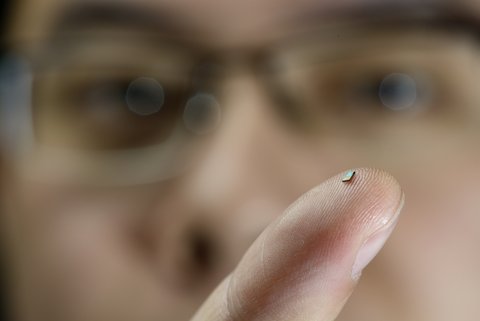Tiny wireless sensor powered by its own radio waves
Researchers from Eindhoven University of Technology in the Netherlands have developed a tiny wireless temperature sensor that is powered by radio waves from the sensor’s own wireless network.

This breakthrough sensor requires no wires or batteries and may have future applications in the development of smart buildings capable of responding to residents’ needs. For example, the tiny sensor may find use in applications like turning the heat and lights on only when someone is in the room to save energy. The technology required to make that happen is only possible by using sensors without wires and batteries, though.
Since the sensor can function under layers of paint, plaster, or concrete, Peter Baltus, TU/e professor of wireless technology, says this will make the sensor easy to incorporate in buildings, for example, by ‘painting’ it onto the wall with the latex.
That’s only possible if these sensors are wireless and need no batteries, otherwise in a large building you would have to change the batteries every day.
For now, the tiny sensor has a range of 2.5 centimeters, but the researchers want to extend this range to over three feet within a year, with an end goal of 16 ft..
The sensor is equipped with a router and an antenna that sends radio waves to the sensors to power them. The whole system was developed to consume as little energy as possible. The router uses little power since the energy transfer is directed at the sensor only and the sensors are composed of materials that keep their energy consumption low as well.
How it works
The sensor, based on 65-nm CMOS technology, contains an antenna that captures the energy from the router. It then stores that energy and, once there is enough, the sensor switches on, measures the temperature and sends a signal to the router. This signal has a slightly distinctive frequency, depending on the temperature measured. The router can figure out the the temperature from this distinctive frequency, as well.
The tiny device is based on technology that’s incorporated into other sensors, such as ones that measure movement, light and humidity.
According to Baltus, smart home initiatives aren’t the only foreseen applications. There’s also opportunity in payment systems and wireless identification to smart buildings and industrial production systems that can be kept low cost. Mass production will keep the cost of a sensor down to around 20 cents, Baltus explains.

Comments are closed, but trackbacks and pingbacks are open.